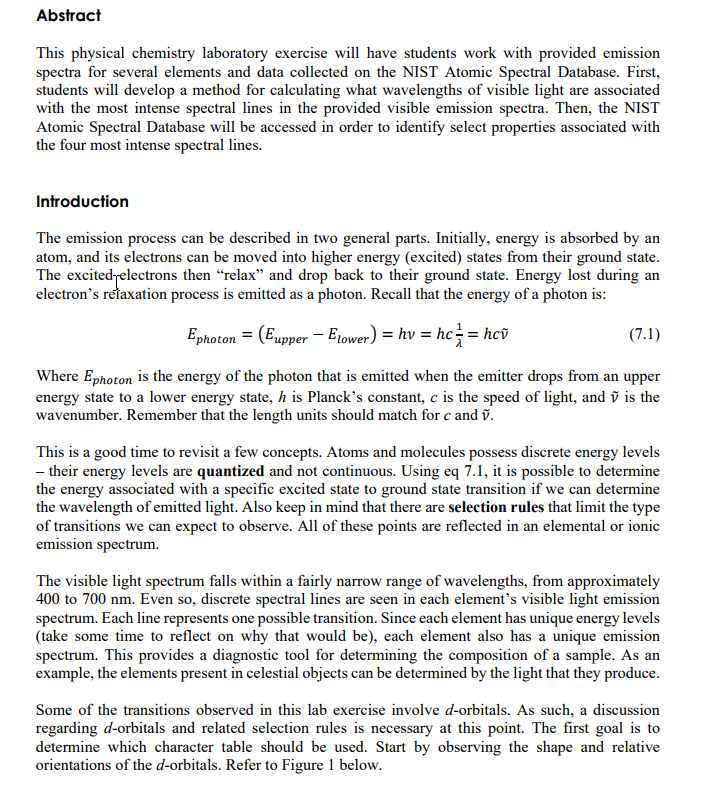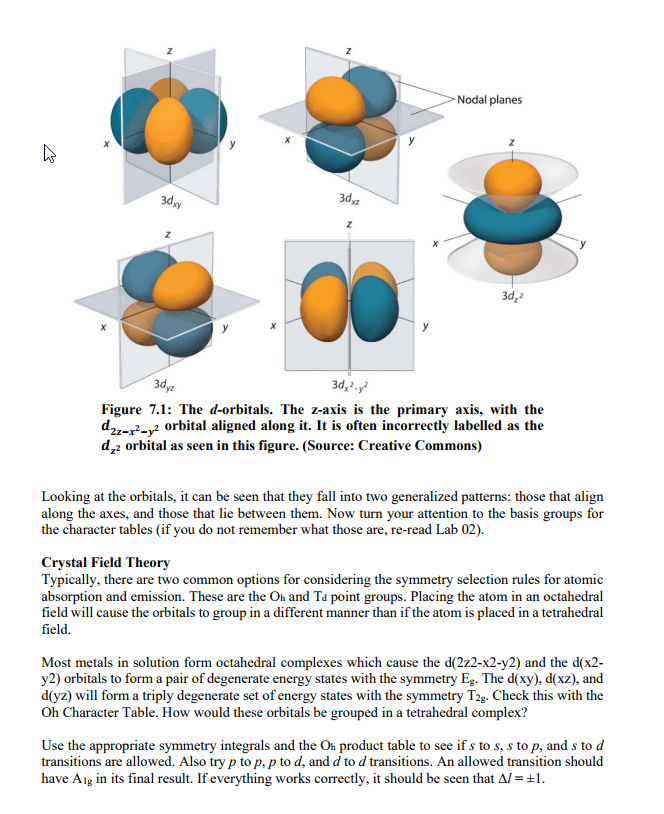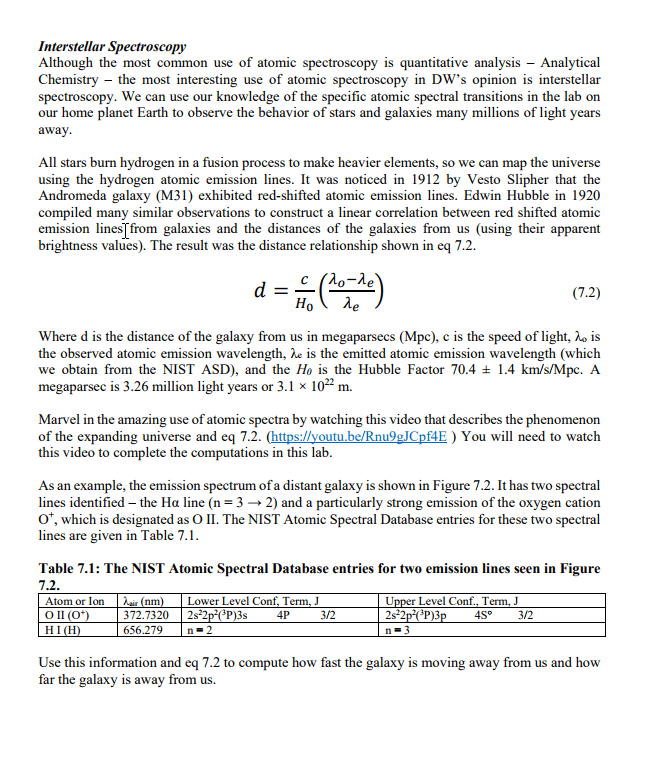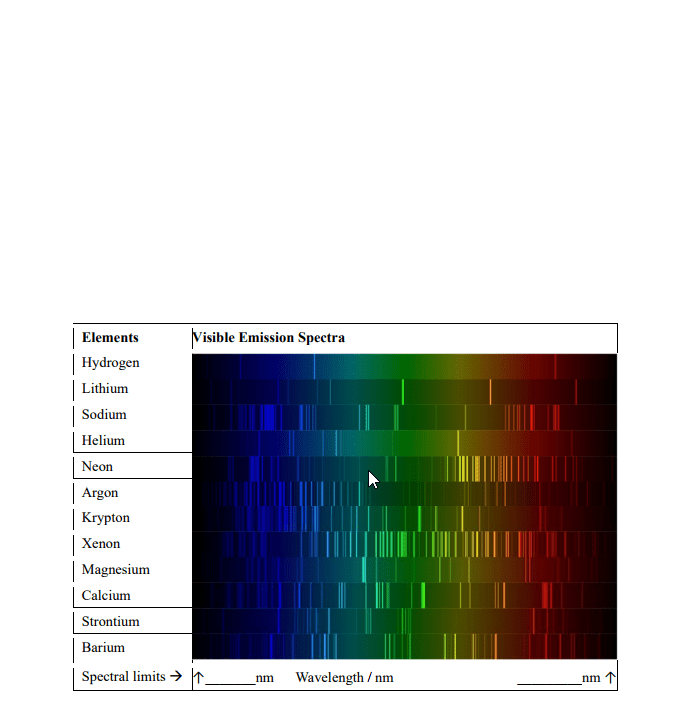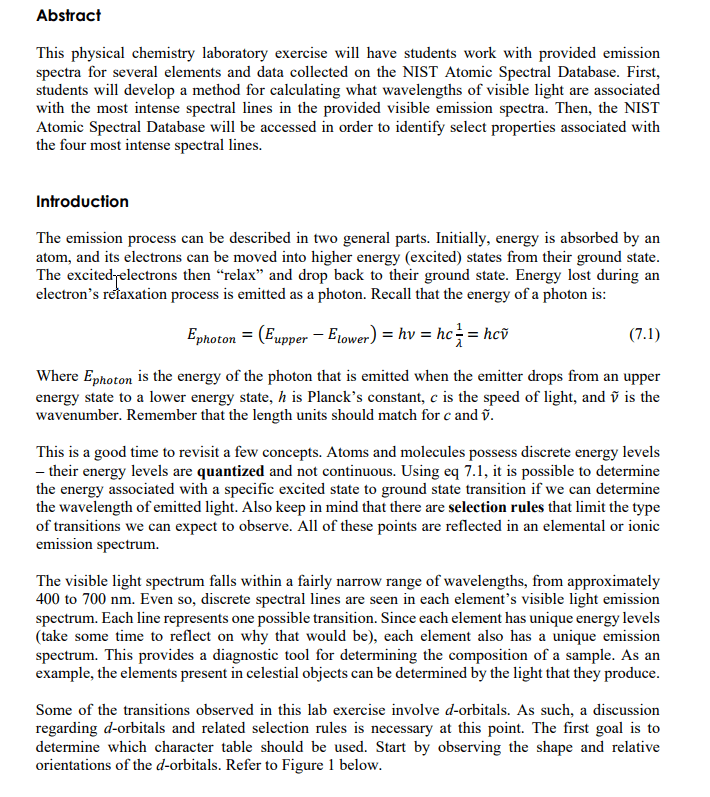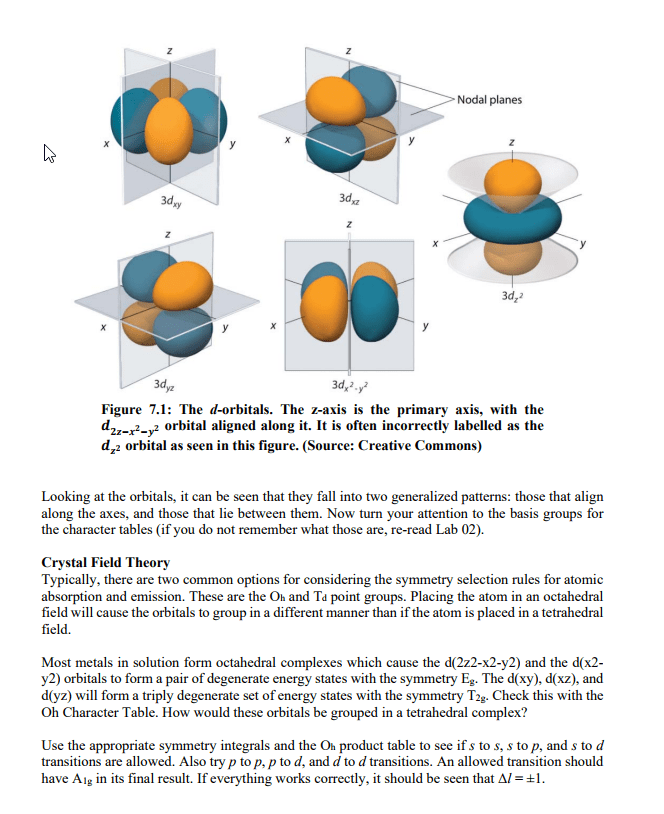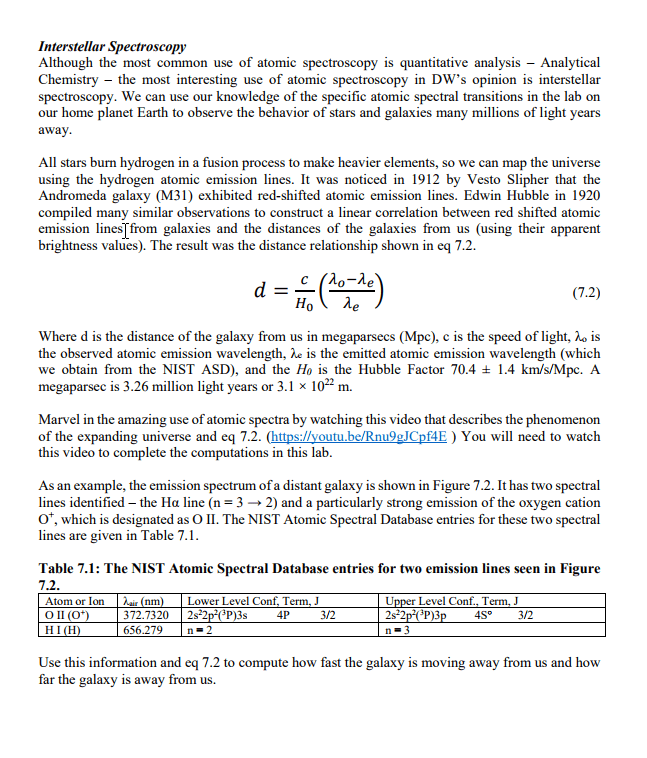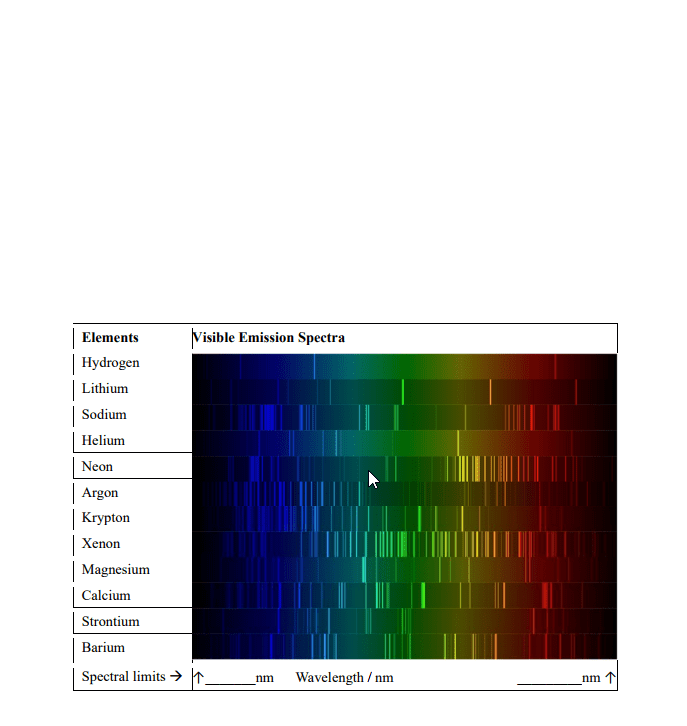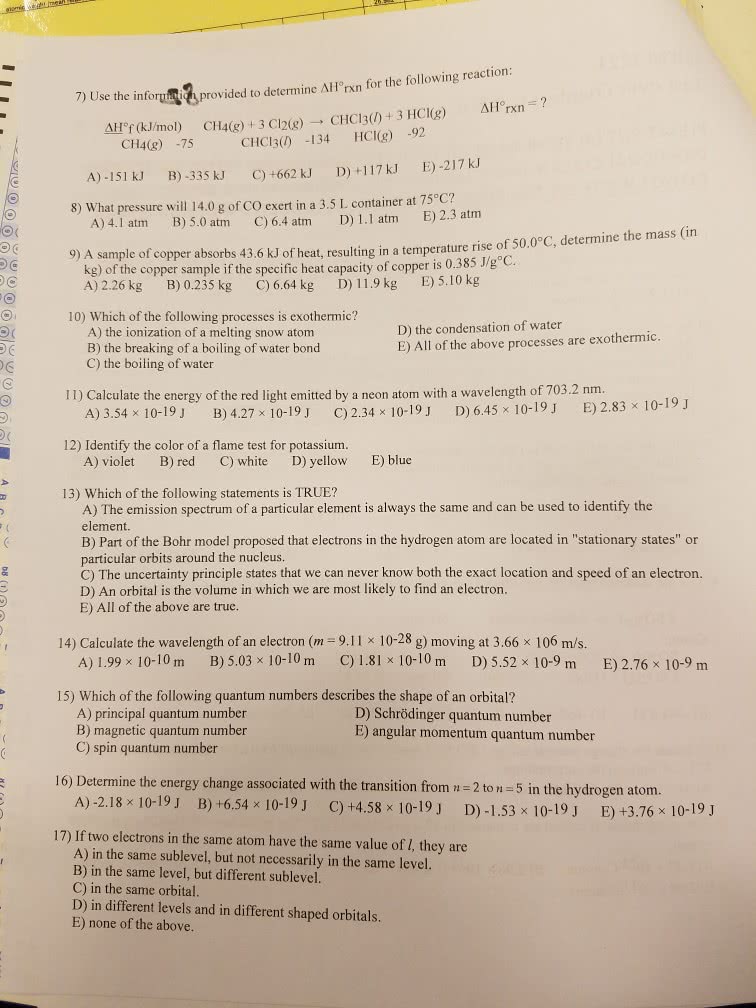CHE 101 Lecture Notes - Lecture 6: Niels Bohr, Atomic Nucleus, Photographic Film

The Electronic Structure of the Atom
When a hydrogen atom is irradiated with energy, some of the energy is absorbed and then re-
remitted. If the light emitted by hydrogen atoms is passed through a prism and then onto a
strip of photographic film, the line spectrum.
In 1913 Niels Bohr proposed a model which explained why the hydrogen atom’s line
spectrum looks like it does and why only certain energies are observed in the spectrum. He
proposed that the electron in a hydrogen atom only exists in specific energy states. These
energy states are associated with specific circular orbits which the electron can occupy
around the atom. When an electron absorbs or emits a specific amount of energy is
instantaneously moves from one orbit to another; the greater the energy the father the orbit
from the atomic nucleus.
The pattern of lines in the spectrum reflects the energy level pattern. The observed spectrum
represents energy level differences occurring when an electron in a higher energy level gives
off energy and drops down to a lower level. The energy difference between two particular
energy levels is called the quantum of energy associated with the transition between the two
levels.
A few years after Bohr published his theories on electron orbits, several significant changes
were made to his basic ideas. The theory of quantum mechanics which finally emerged is
beyond the scope of this course, but one change in Bohr’s theory must be mentioned. The
notion of electrons orbiting a nucleus along a specific path in a well defined orbit had to be
abandoned and replaced by the idea that different electrons, depending on their energies,
simply occupy particular regions of space called orbitals.
Experimental studies show that the lowest set of energy levels for hydrogen is arranged as
followed. Each dash represents the energy possessed by a particular orbital in the atom. The
letters s, p, d and f refer to four different types of orbitals which are discussed later.
find more resources at oneclass.com
find more resources at oneclass.com
Document Summary
When a hydrogen atom is irradiated with energy, some of the energy is absorbed and then re- remitted. If the light emitted by hydrogen atoms is passed through a prism and then onto a strip of photographic film, the line spectrum. In 1913 niels bohr proposed a model which explained why the hydrogen atom"s line spectrum looks like it does and why only certain energies are observed in the spectrum. He proposed that the electron in a hydrogen atom only exists in specific energy states. These energy states are associated with specific circular orbits which the electron can occupy around the atom. When an electron absorbs or emits a specific amount of energy is instantaneously moves from one orbit to another; the greater the energy the father the orbit from the atomic nucleus. The pattern of lines in the spectrum reflects the energy level pattern.


